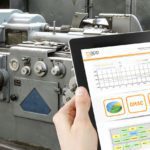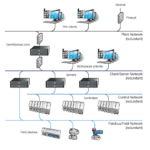Sequential function charts (or SFCs) are one of the five PLC programming languages defined by the IEC 61131-3 standard. (The others being ladder logic diagrams, function block diagrams, structured text and instruction lists.) SFCs are a graphical programming language, not text-based. Being a visual programming language means that it’s well suited to the task of breaking down a large and complex process into smaller pieces that are easier to see and understand than with solely text-based programming environments.

The key concepts underlying SFCs are steps and transitions. A step is basically some function within the overall system, like an individual machine process. A transition is just that, the change from one step to another step or state. Beyond the basics, SFC programs can also include standard logical programming techniques such as feedback loops and branching (either parallel or alternative branches.) SFCs can also be designed with the aide of state diagrams.
Because SFCs are graphical programming environments, it makes other tasks surrounding PLC programming that much easier and even more intuitive. For instance, tasks such as initial design, debug, and troubleshooting the program itself.
PLC manufacturers typically offer more detailed information about SFCs, including programming instructions for their specific product offerings.






Leave a Reply
You must be logged in to post a comment.